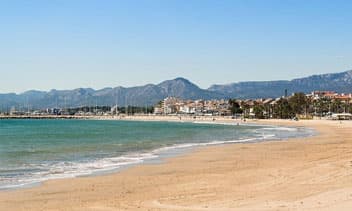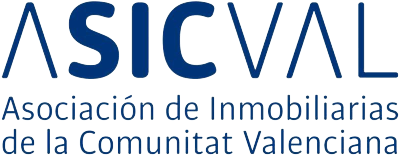
Cadastral Reference in Spain: Definition, Use & How to Find It
Last update: September 3, 2025
Reading time: 5 min
No Time to Read It All? Here’s the Quick Summary:
The cadastral reference in Spain is a 20-character alphanumeric code that uniquely identifies every real estate property. It’s used to locate the exact position of a property on the national cadastral map. Required in all official documentation — from sales and inheritance deeds to tax declarations — it plays a key role in preventing fraud, simplifying legal processes, and ensuring transparency. You can find it online at catastro.hacienda.gob.es.
What Is a Cadastral Reference in Spain?
The cadastral reference (referencia catastral in Spanish) is a mandatory and official identifier assigned to every property in Spain by the General Directorate of the Cadastre (Dirección General del Catastro), under the Ministry of Finance.
Think of it as a property’s ID card: a unique, unchanging code that precisely defines a plot or building in Spain’s land registry system.
This code is critical for:
-
Real estate transactions (sales, inheritances, donations)
-
Urban planning
-
Tax assessments (IBI, property wealth tax)
-
Legal clarity and fraud prevention
It doesn’t change with ownership, and it’s valid for the lifetime of the property.
Structure of the Cadastral Reference: Urban vs. Rural Properties
Every cadastral reference in Spain consists of 20 characters, but its structure depends on the property type:
Urban Property Example: 9872023VH5797S0001WX
9872023VH5797S0001WX| Segment | Meaning |
|---|---|
| 9872023 | Parcel number (cadastral plot identifier) |
| VH5797S | Map sheet (zone or section on the cadastral map) |
| 0001 | Specific building or unit within the parcel |
| WX | Control digits (used for validation) |
Meaning: Parcel number (cadastral plot identifier)
Meaning: Map sheet (zone or section on the cadastral map)
Meaning: Specific building or unit within the parcel
Meaning: Control digits (used for validation)
Source: Catastro Español
Rural Property Example: 13077A018000390000FP
13077A018000390000FP| Segment | Meaning |
|---|---|
| 13 | Province code (e.g. Ciudad Real) |
| 077 | Municipality code (INE code) |
| A | Sector or special zoning identifier |
| 018 | Polygon (rural division of the municipality) |
| 00039 | Plot number within the polygon |
| 0000 | Subdivision or construction within the plot |
| FP | Control digits |
Meaning: Province code (e.g. Ciudad Real)
Meaning: Municipality code (INE code)
Meaning: Sector or special zoning identifier
Meaning: Polygon (rural division of the municipality)
Meaning: Plot number within the polygon
Meaning: Subdivision or construction within the plot
Meaning: Control digits
Source: Catastro Español
This structure offers geo-administrative precision, especially useful in non-urban areas.
Where and Why Is the Cadastral Reference Required?
Legal Transactions
Mandatory in all notarized documents such as:
- Sales contracts
- Inheritance deeds
- Property donations
Ensures clear identification of the real estate involved.
Administrative and Fiscal Purposes
Used in:
- Property tax (IBI)
- Wealth tax
- Capital gains tax
- Urban planning procedures (permits, zoning)
Other Required Documents
| Document Type | Is the Reference Required? |
|---|---|
| Notarial acts (sale, succession) | Mandatory |
| Rental agreements | Required |
| Electricity or water supply contracts | Often required |
| Tax returns (related to property) | Essential |
| Planning applications (permits, works) | Necessary |
| Property Registry inscription | Mandatory |
Is the Reference Required? Mandatory
Is the Reference Required? Required
Is the Reference Required? Often required
Is the Reference Required? Essential
Is the Reference Required? Necessary
Is the Reference Required? Mandatory
Source: Catastro Español
Failing to include the cadastral reference where legally required may result in a fine between €60 and €6,000, although it does not invalidate the legal act itself.
How to Find a Cadastral Reference Online
You can look up any Spanish property’s cadastral reference for free using the official website:
catastro.hacienda.gob.es
Search Options:
-
By address (province, municipality, street, number)
-
By cadastral reference (if already known)
-
By rural plot data (polygon, parcel)
-
By GPS coordinates
-
By CRU code (unique identifier from the Property Registry)
Results Include:
-
Cadastral reference
-
Property’s technical description (built area, use, floors, year of construction)
-
Cadastral value (used for tax purposes)
-
Interactive map and nearby references
Owner names are not displayed to the public — only authorized parties (e.g. notaries, registrars) can access that data.
What Happens If the Reference Is Missing?
-
You may receive a financial penalty (from €60 to €6,000).
-
The act (e.g. sale, inheritance) remains legally valid.
-
You’re legally responsible for providing the reference during:
-
Any transaction
-
Tax filing
-
Administrative procedures
-
-
Notaries or registrars can retrieve it directly if needed.
Conclusion
The cadastral reference is a cornerstone of real estate in Spain. It ensures clarity, legal security, and tax accuracy for all property-related procedures. Whether you’re buying, selling, inheriting, or simply updating property data, this unique code is essential.
To check a property’s cadastral data or look up your own, always refer to the official government portal:
catastro.hacienda.gob.es












